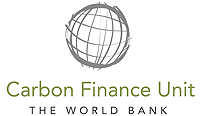Overview
The project activity involved investments in a gas collection system, leachate drainage system, and a future modular power generation plant at two of NovaGerar landfill sites. LFG gas is being captured and flared at the Marambaia dump site, and at the Adrianópolis sanitary landfill. The Marambaia dump site opened in 1986 and closed in February 2003 with around 700,000 tons of waste disposed at the site. The landfill called Nova Iguaçu (former name of “Andrianópolis”) started operation in February 2003 and has been disposing about 4,000 tons of municipal solid waste per day. The Adrianópolis and Marambaia sites are adjacent to each other located close to a densely populated section of the municipality of Nova Iguaçu, Rio de Janeiro, with around 800,000 inhabitants. The project consists of two phases:
- Collection and flaring of LFG, reducing uncontrolled release of methane
- Generation of electricity from LFG, reducing CO2 emissions associated to the use of grid
- electricity.
Due to the age of the waste, the project activity has not continued extracting LFG from the Marambaia site since the landfill gas has practically been depleted. Therefore, the project focused on the gas extraction at the Adrianópolis Landfill site by installing power generation in 2019. The LFG extracted that will not be used to generate electricity will be flared (open system).
Benefits
The project has improved local health and the environment. Contaminated leachate and surface runoff from existing dumpsites are affecting ground and surface water quality. The uncontrolled release of landfill gas (LFG) is similarly impacting the environment and leading to risks of explosions in uncontrolled open dumpsites. With the operation of the NovaGerar Landfills (NGLF), environmental health risks and the potential for explosions are greatly reduced. The project also had a limited, but positive impact on local employment through the recruitment of staff for day-to-day operation of the landfill facilities.
The project is helping the Host Country fulfill its goal of promoting sustainable development.
Specifically, the project:
- Has increased employment opportunities in the area where the project is located;
- Has used clean and efficient technologies;
- Has acted as a clean technology demonstration project;
- Has optimized the use of natural resources, avoids uncontrolled waste management.
